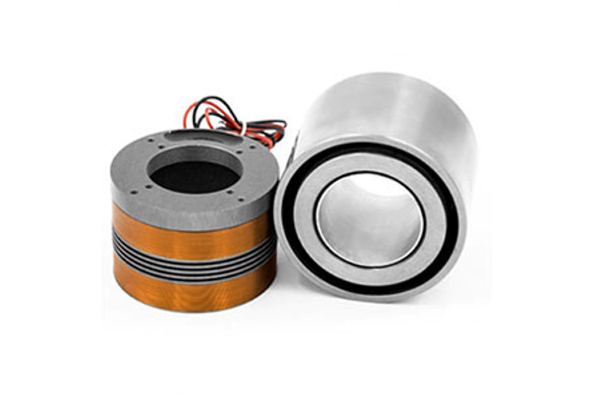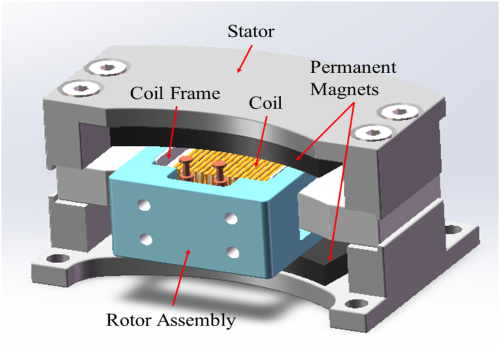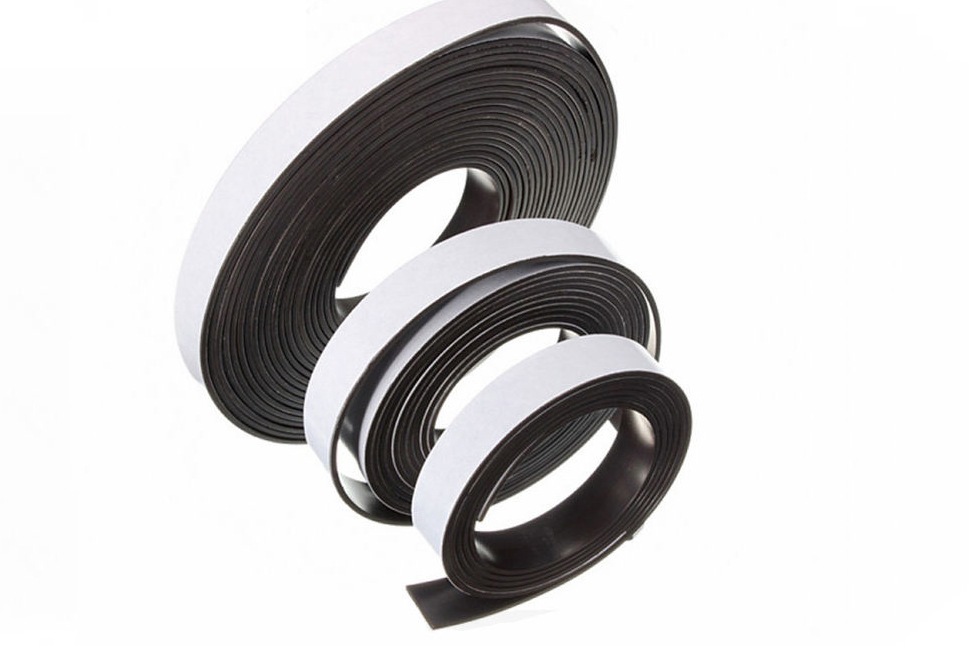VCM Motor Fundamentals and Comparison
Introduction
Voice Coil Motors (VCM Motors) are a unique type of motor that provides highly responsive and precise linear motion. Known for their smooth and fast adjustments, VCM Motors are widely used in applications requiring exact linear positioning. This article covers the fundamentals of VCM technology, including operating principles, construction, and the key distinctions between VCMs and other motor types.
Basic Operating Principles of VCMs
A VCM Motor operates on the principle of electromagnetic force, where a magnetic field generated by a coil interacts with a permanent magnet to produce linear motion. Here’s a breakdown of how it works:

- Electric Current and Magnetic Field: When an electric current passes through the coil, it creates a magnetic field around the coil.
- Interaction with Permanent Magnet: This magnetic field interacts with a nearby permanent magnet’s field, generating a force based on the direction and strength of the current.
- Linear Motion: The resulting force moves the coil in a straight line along the magnetic field. Adjusting the current strength and polarity changes the direction and speed of this motion.
This simple yet effective operation allows VCMs to deliver fast and smooth linear movement, making them ideal for precise positioning applications.
Further reading: Everything You Need to Know About Voice Coil Motors
Construction of a VCM Motor
The typical construction of a VCM includes:
 [1]
[1]
- Coil: A wound copper coil serves as the primary component generating the magnetic field when current passes through it. The coil is usually mounted on a moving part, which enables linear motion.
- Permanent Magnet: The permanent magnet creates a stable magnetic field that interacts with the magnetic field generated by the coil, driving the coil’s linear movement.
- Housing: VCMs often have a compact housing that holds the coil and magnet in place while allowing the coil to move freely. The housing also helps shield and protect the motor from external interference.
Unlike other motor types, VCM Motors do not require gears, bearings, or other mechanical components to convert rotary motion into linear motion. This construction results in a relatively low-maintenance and compact motor, especially useful in space-constrained devices like camera modules and micro-actuators.
Key Characteristics of VCMs
VCMs offer several distinct characteristics:
- Direct Linear Motion: VCMs produce direct linear motion, which is ideal for applications that require smooth and precise back-and-forth movement.
- Fast Response: VCMs respond almost instantly to changes in current, providing quick and accurate adjustments. This fast response time is especially beneficial in applications like autofocus, where rapid refocusing is needed.
- Smooth and Continuous Control: Unlike motors that work in steps (e.g., stepper motors), VCMs provide smooth, uninterrupted movement, allowing for precision without vibrations.
- Quiet Operation: With fewer moving parts and no gears, VCMs operate quietly, making them ideal for applications where noise can be disruptive, such as in medical devices or photography.
How VCMs Differ from Other Motor Types
VCMs stand out due to their unique construction and functionality. Here’s how they compare to other common motor types:
- VCMs vs. DC Motors
--Movement Type: VCMs produce linear motion directly, while DC motors produce rotary motion that often requires additional mechanisms to create linear movement.
--Response and Precision: VCMs provide smoother, more precise motion, while DC motors, often requiring gears or cams, may lack the same level of direct linear control.
- VCMs vs. Servo Motors
--Control and Feedback: Servo motors generally require complex feedback systems to maintain accurate positioning. VCMs, by contrast, can often achieve similar precision with simple current adjustments.
--Motion Type: Servo motors are typically used for rotational control, whereas VCMs excel in applications that require true linear motion.
- VCMs vs. Stepper Motors
--Smoothness of Movement: Stepper motors move in discrete steps, which can introduce slight vibrations. VCMs provide continuous, smooth motion, ideal for applications like autofocus.
--Response Speed: VCMs are faster to respond to input changes, while stepper motors may require more time to achieve smooth movement across small distances.
Applications Benefiting from VCM Fundamentals
Given their unique characteristics, VCM Motors are widely used in applications requiring fast, precise linear motion control. Common uses include:
- Autofocus Systems in Cameras: VCMs allow cameras to quickly and quietly adjust lens focus, producing clear images even for moving subjects.
- Medical Devices: VCMs are found in diagnostic and surgical equipment that needs silent, precise control for patient comfort and safety.
- Precision Actuators in Industrial Automation: VCMs offer quick response times for fine adjustments in automated processes, from semiconductor manufacturing to robotics.
Conclusion
Voice Coil Motors are compact, efficient, and highly responsive, making them the go-to choice for applications demanding linear motion precision. Their simple construction, direct control, and smooth motion distinguish them from DC, servo, and stepper motors, especially in space-sensitive and high-precision environments. As technology advances, VCMs will continue to be a crucial component in fields requiring fine-tuned, quiet, and efficient motion control. For more magnet assemblies, please visit Stanford Magnets.
Reference:
[1] Hu, Jianhui & Wu, Jiaxin & Chen, Jinhao & Li, Yong & Ren, Liuyang & Wang, Qian & Liu, Chengjun. (2022). Calculation, simulation and fast estimation of thermal resistance of rotary voice coil actuators. IET Electric Power Applications. 16. 10.1049/elp2.12184.















